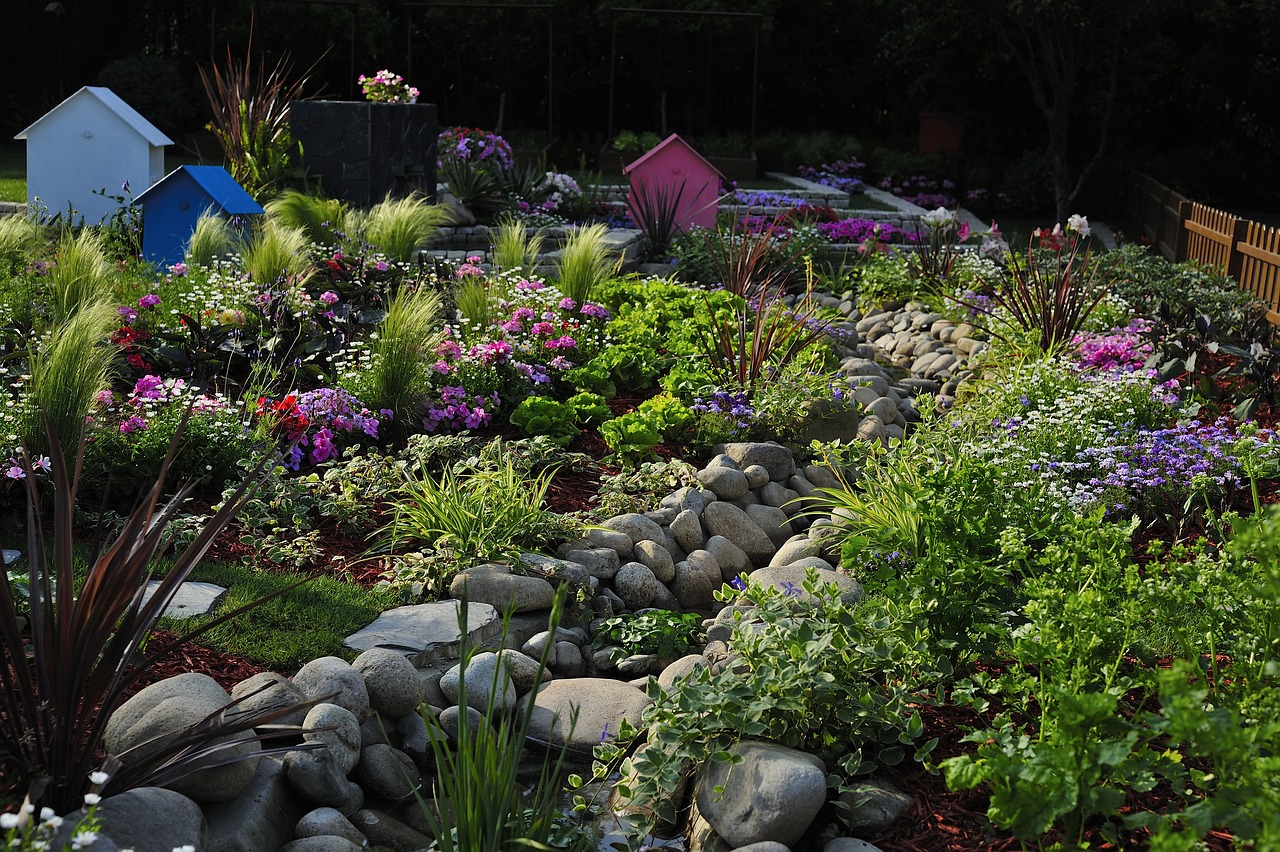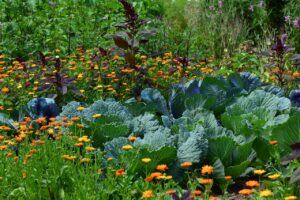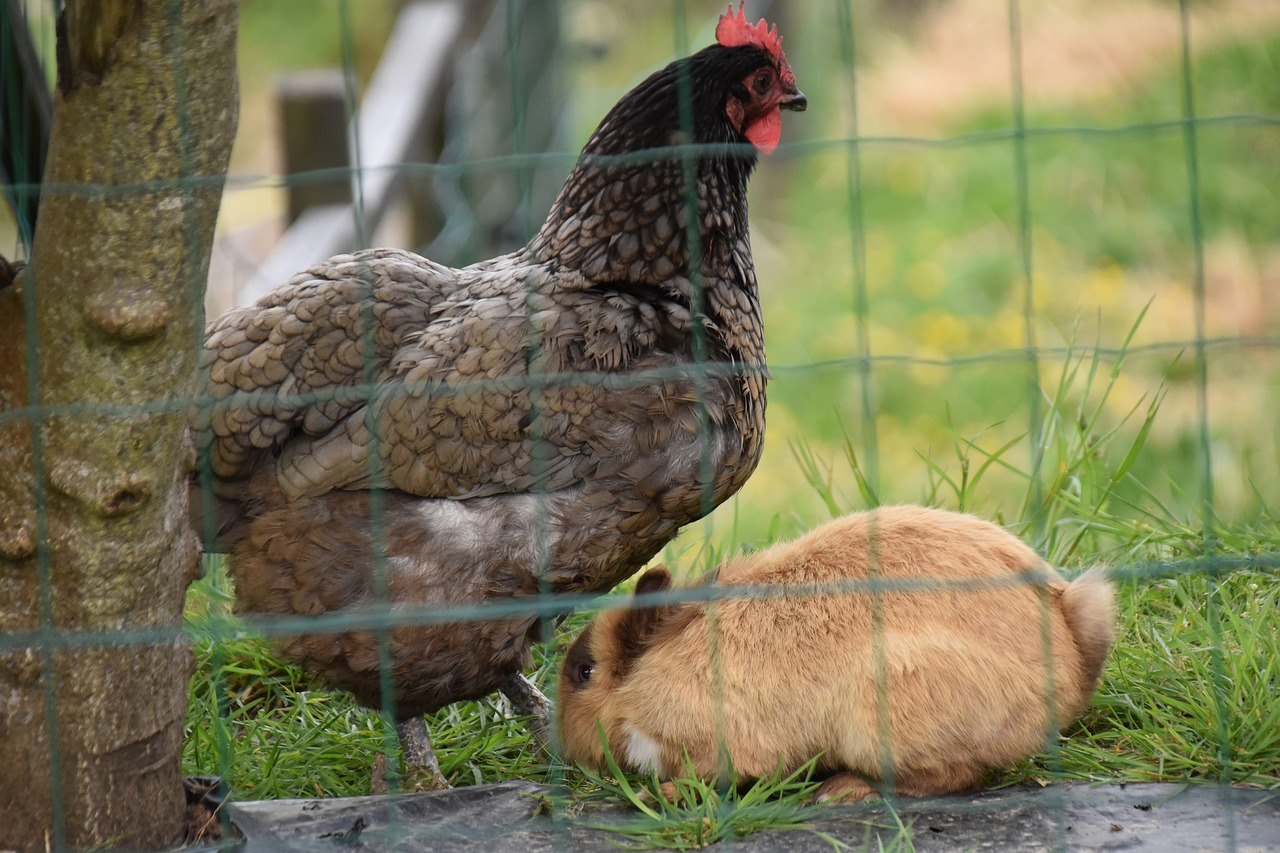Preppers typically worry about lawlessness and protecting their resources from thieves in a grid-down scenario, but there are other circumstances when you may be concerned with the loss of your resources—namely the loss of your garden produce or livestock. You may have plenty of ground for a garden or to have small livestock, but if your HOA or local regulations don’t allow it, you’re SOL.
. . . Unless you hide it.
Even in a standard suburban yard, where you live cheek-to-jowl with your neighbors, there are ways to hide your food right out in the open and the authorities (or thieves) will be none the wiser.
Polyculture and Permaculture
“Permaculture” is technically just the use of perennials (i.e. permanent) plants for the majority of your garden. But it has expanded to include many interrelated, non-traditional gardening techniques, including polyculture.
Monoculture is the planting of just one crop, as is typical on commercial farms. But you will also see the term applied on the much smaller scale of backyard gardens. In that context, monoculture means the placement of just one crop per raised bed, or very distinct rows or squares of plants with plenty of space between then—i.e. the typical garden.
Polyculture, or inter-cropping, on the other hand, means mixing plants together so that your raised bed or garden row does not contain just one plant. In the ground, your garden looks more like landscaping, rather than the trusty old rectangular garden with everything laid out in perfectly straight rows.
Polyculture is an important aspect of permaculture design, hence why a polyculture garden may be referred to as a “permaculture” garden, even if there are few, if any, perennial plants included.
Because polyculture gardens do not look like a typical tilled garden, they are easily disguised as landscaping. Many leafy plants have very lovely leaves—especially if you opt for heirloom varieties, which come in a much wider range of color options than you can find in the seed selection at a big box store. Even root vegetables, like some beets, can produce pretty leaves. And grains, like amaranth and millet, can be grown like ornamental grasses.
Espalier Fruit Trees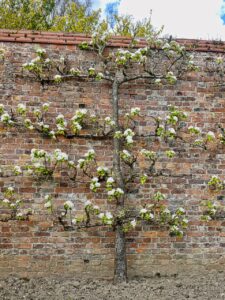
There’s generally nothing wrong with replacing standard suburban ornamental trees, like Japanese maple, dogwood, and Bradford pear, with dwarf fruit trees, but if you are restricted in how many trees you can have, or have a severe plant height limit, or you just don’t want your fruit harvest to be so obvious to the neighbors, then try espalier. Espalier is an old technique for training fruit trees (and some ornamental plants as well, like roses) to grow flat against a wall. As most suburban backyards have fences, this is an excellent way to cram in a number of fruit trees without anyone realizing they’re fruit trees. Even when they’re laden with fruit, at a distance, they appear to be some sort of hedge or vine, not a fruit tree.
How to Espalier Fruit Trees and Climbing Plants in 6 Easy Steps
Edible Ornamentals
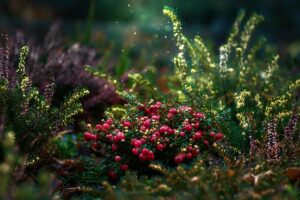 Most flowers are actually edible (some notable common ornamentals which are exceptions to this rule are daffodils, irises, and hydrangeas). And some flowering plants also have edible leaves, like nasturtiums, or other edible parts, like the roots of the sunchoke (aka Jerusalem artichoke, which is actually in the sunflower family). And then there’s that classic landscape plant—the queen of the shade—the hosta. Hostas are actually grown for food in Asia, where they originate; only in the West have they been regulated to lawn decoration.
Most flowers are actually edible (some notable common ornamentals which are exceptions to this rule are daffodils, irises, and hydrangeas). And some flowering plants also have edible leaves, like nasturtiums, or other edible parts, like the roots of the sunchoke (aka Jerusalem artichoke, which is actually in the sunflower family). And then there’s that classic landscape plant—the queen of the shade—the hosta. Hostas are actually grown for food in Asia, where they originate; only in the West have they been regulated to lawn decoration.
Edible ornamentals are easily interspersed with standard vegetable crops, like tomatoes or squashes, to hide the fact that your landscaping is really your garden. When people see plants they recognize, like roses, marigolds, and hostas, they will not assume that the plant with the large leaves next to them is anything other than an ornamental; they will not stop to peek under the leaves and see the yellow squash or zucchini hidden underneath.
Here are 5 edible plants that blend really well into a standard flowerbed:
This lady has a traditional garden in the backyard, but this video focuses on her front yard, where she practices edible landscaping. She loves flowers, so she mixes them in with her vegetables in alternating rows so that the vegetables just become a green background to her flowers (although some of her vegetables also bloom). If you only use edible flowers, then you will have a lush landscape that’s completely edible.
If the previous flower/vegetable garden is a little too riotous for you, you can plant things a bit less densely and end up with a landscape island that blends in with any upscale subdivision.
Water Features
Do you have or would you like to have an ornamental pond or water feature in your yard? There are edible water plants that can be grown in and around your pond without anyone knowing. Duckweed is a tiny water plant (it can look like algae at a distance) that is edible (and, as the name suggests, is loved by ducks and other poultry). Water chestnuts and cress are two other edible plants that are easily grown in and around a pond. And if your pond is large enough to support the scale, cattails are a pretty addition and also a classic edible plant for foragers.
Five edible plants for backyard ponds:
This pond turns a decorative waterfall into an aquaponic garden growing lettuce. (From what I gather from the comments, the fish are not meant to live in the pond long-term; in this area, people buy their fish at the market still swimming and keep them alive until it’s dinnertime. That being said, you could keep some smaller fish in a pond like this, like goldfish or small koi, and their waste would help provide nutrients to the plants and the plants will help clean the water and the waterfall aerate it.)
Want to learn about hiding livestock? Part II is here.
Interested in more gardening techniques for unique situations? Check out this post.
